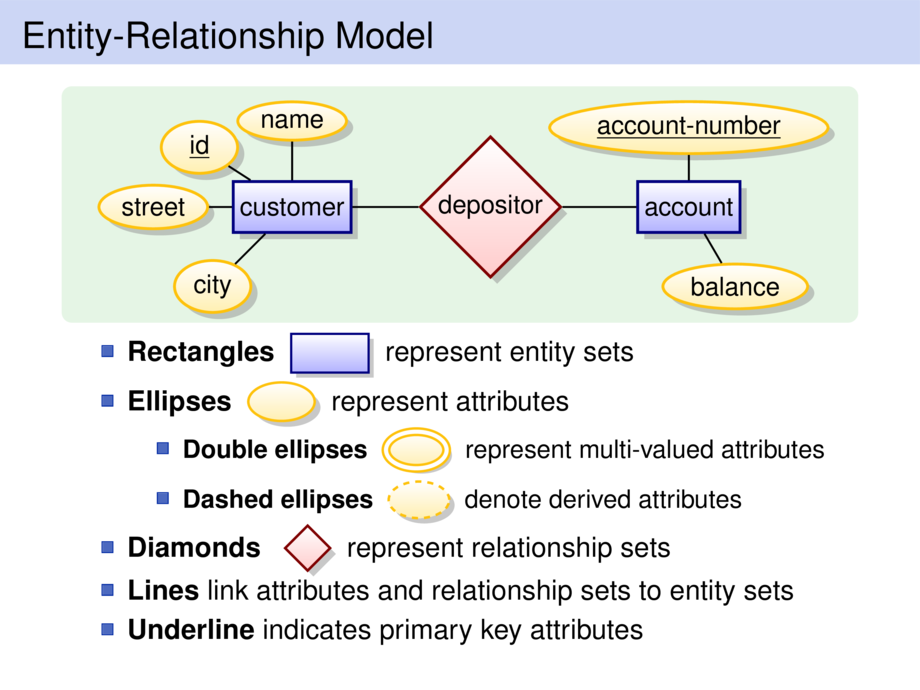



































































































8/98
\begin{frame}
\frametitle{Entity-Relationship Model}
\entityexample
\begin{itemize}
\item \emph{Rectangles} \;\scalebox{.7}{\tikz[baseline=-.75ex] \node[entity] {\quad};}\;
represent entity sets
\item \emph{Ellipses} \;\scalebox{.8}{\tikz[baseline=-.75ex] \node[attribute] {\vphantom{A}\quad};}\;
represent attributes
\begin{itemize}
\item \emph{Double ellipses} \;\scalebox{.8}{\tikz[baseline=-.75ex] \node[multi attribute] {\vphantom{A}\quad};}\;
represent multi-valued attributes
\item \emph{Dashed ellipses} \;\scalebox{.8}{\tikz[baseline=-.75ex] \node[derived attribute] {\vphantom{A}\quad};}\;
denote derived attributes
\end{itemize}
\item \emph{Diamonds} \;\;\scalebox{.8}{\tikz[baseline=-.75ex] \node[relationship,minimum size=8mm] {};}\;
represent relationship sets
\item \emph{Lines} link attributes and relationship sets to entity sets
\item \emph{Underline} indicates primary key attributes
\end{itemize}
\vspace{10cm}
\end{frame}

